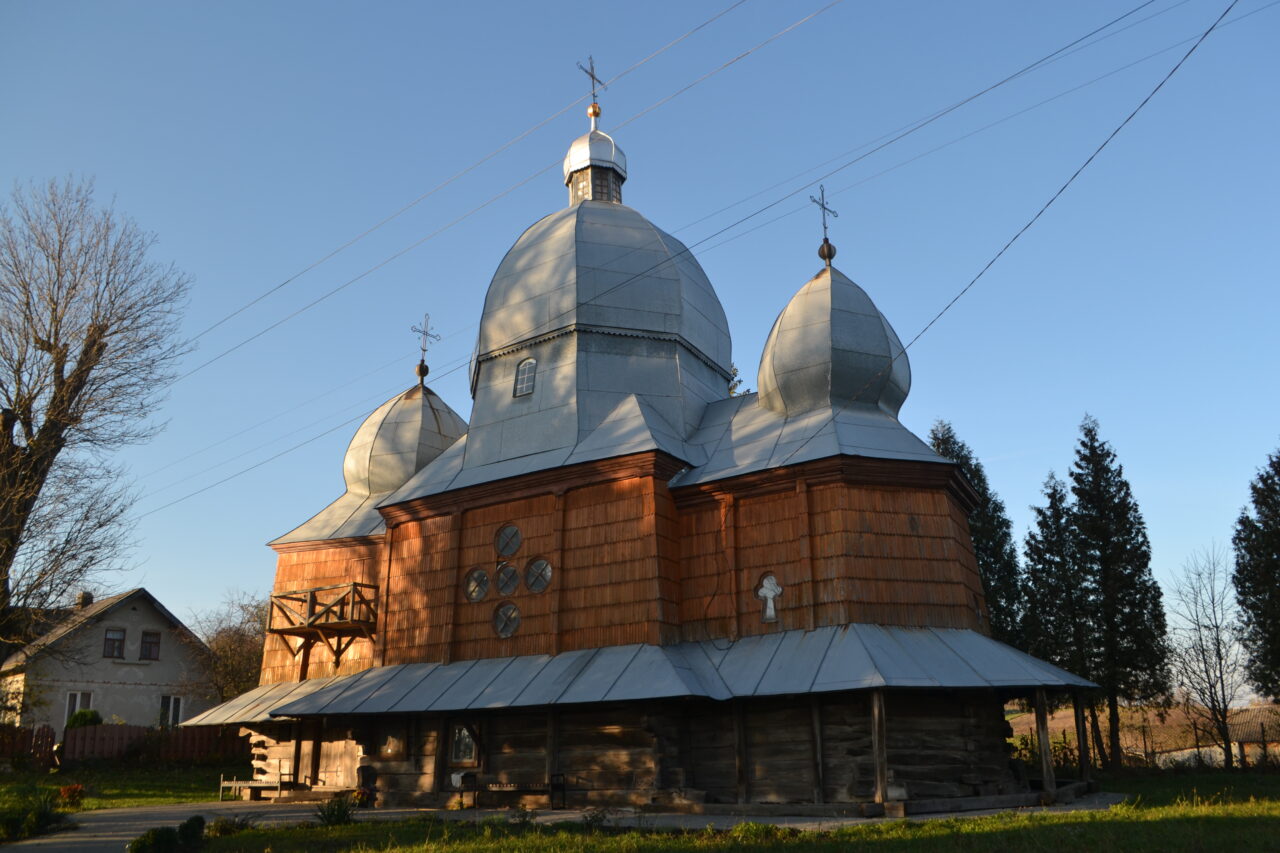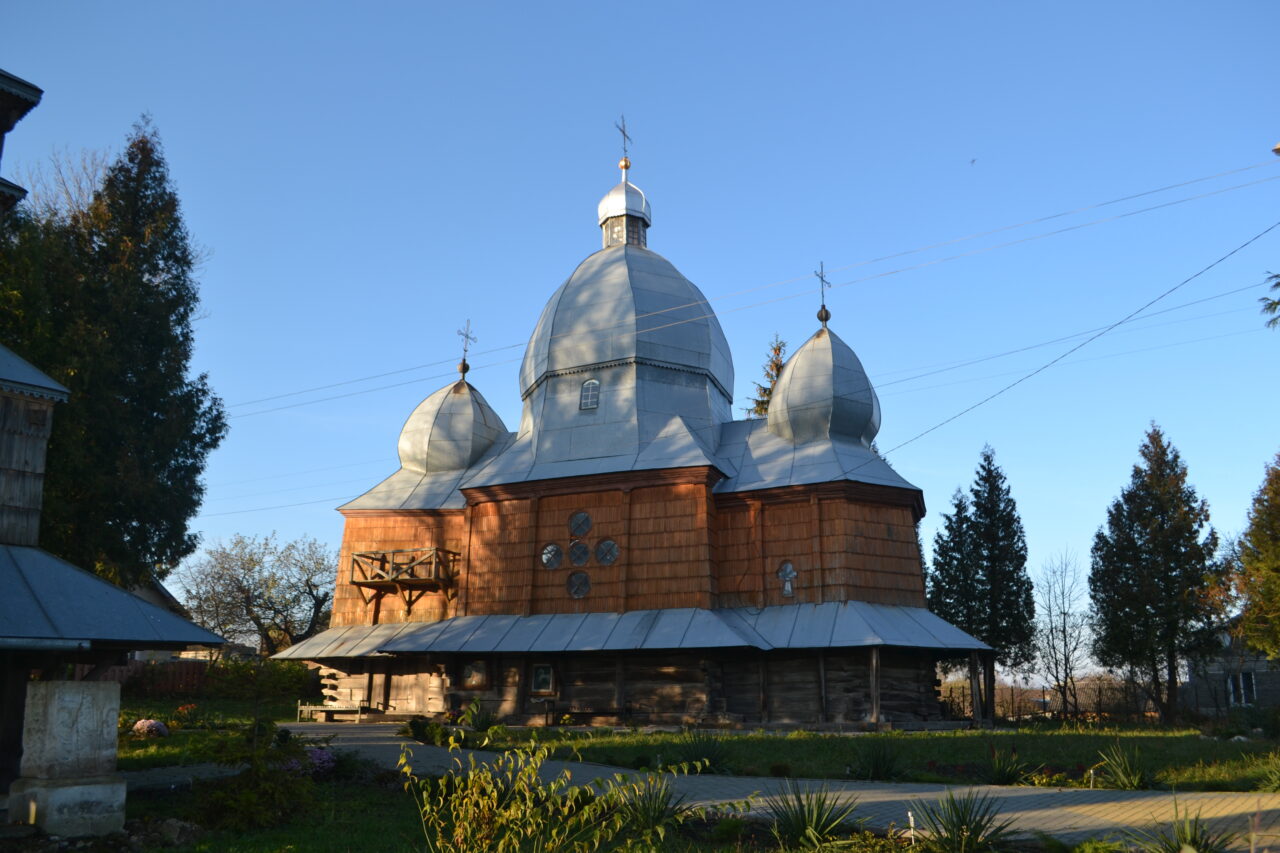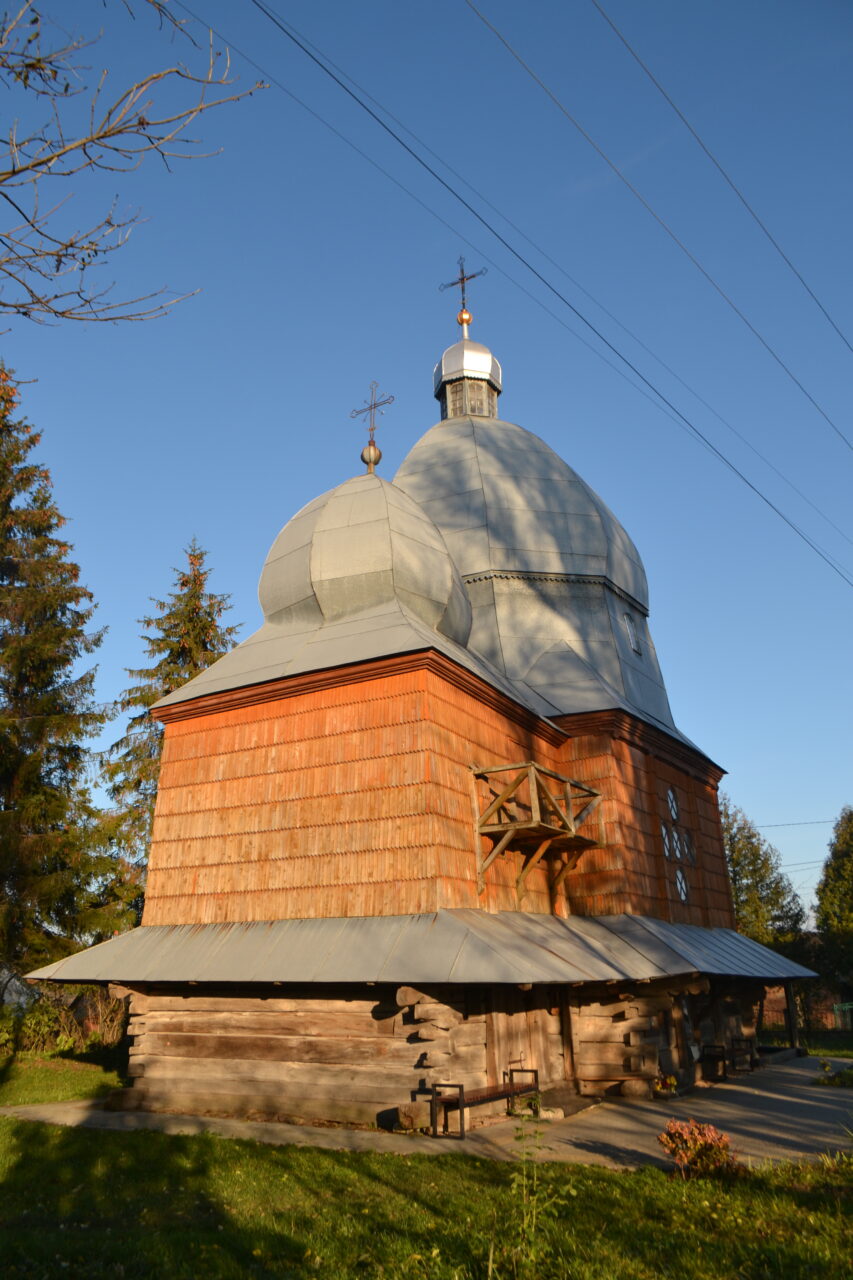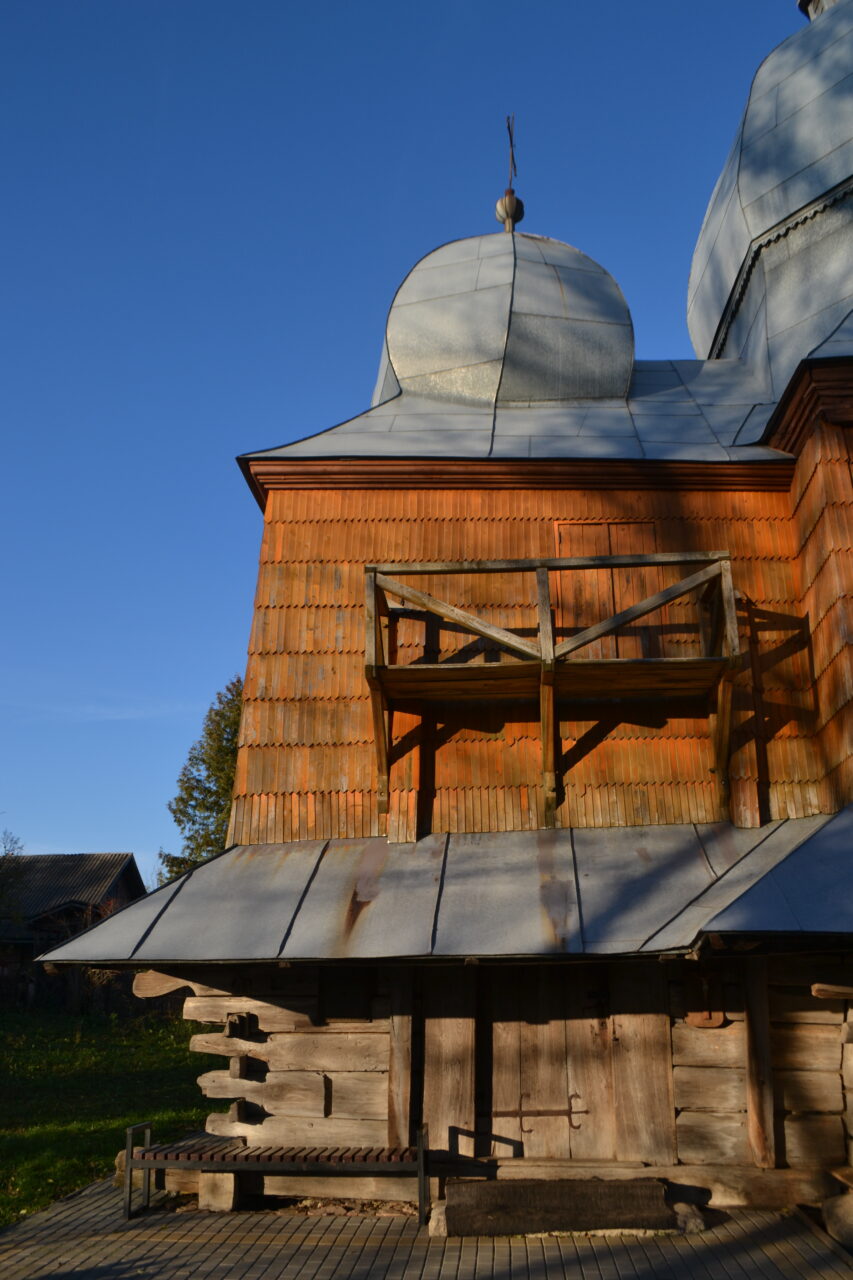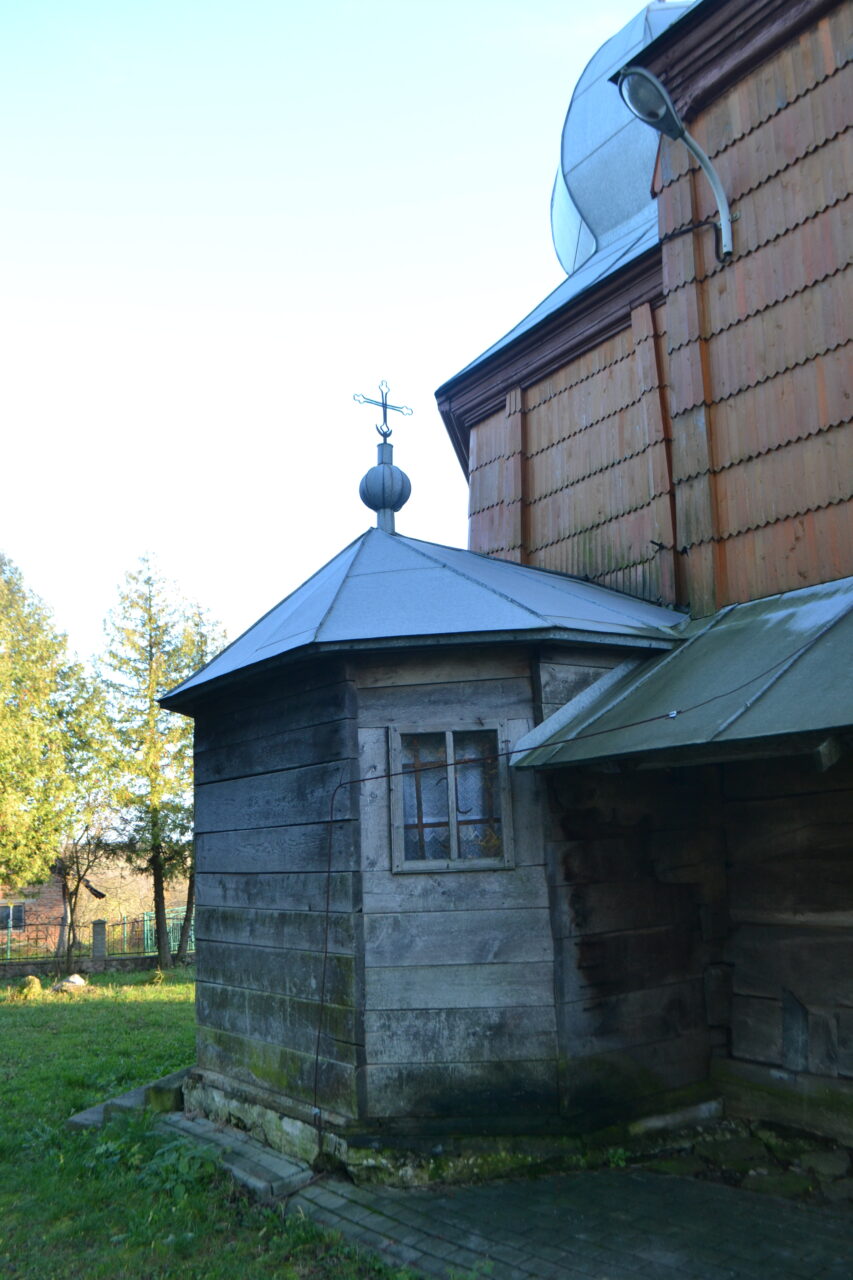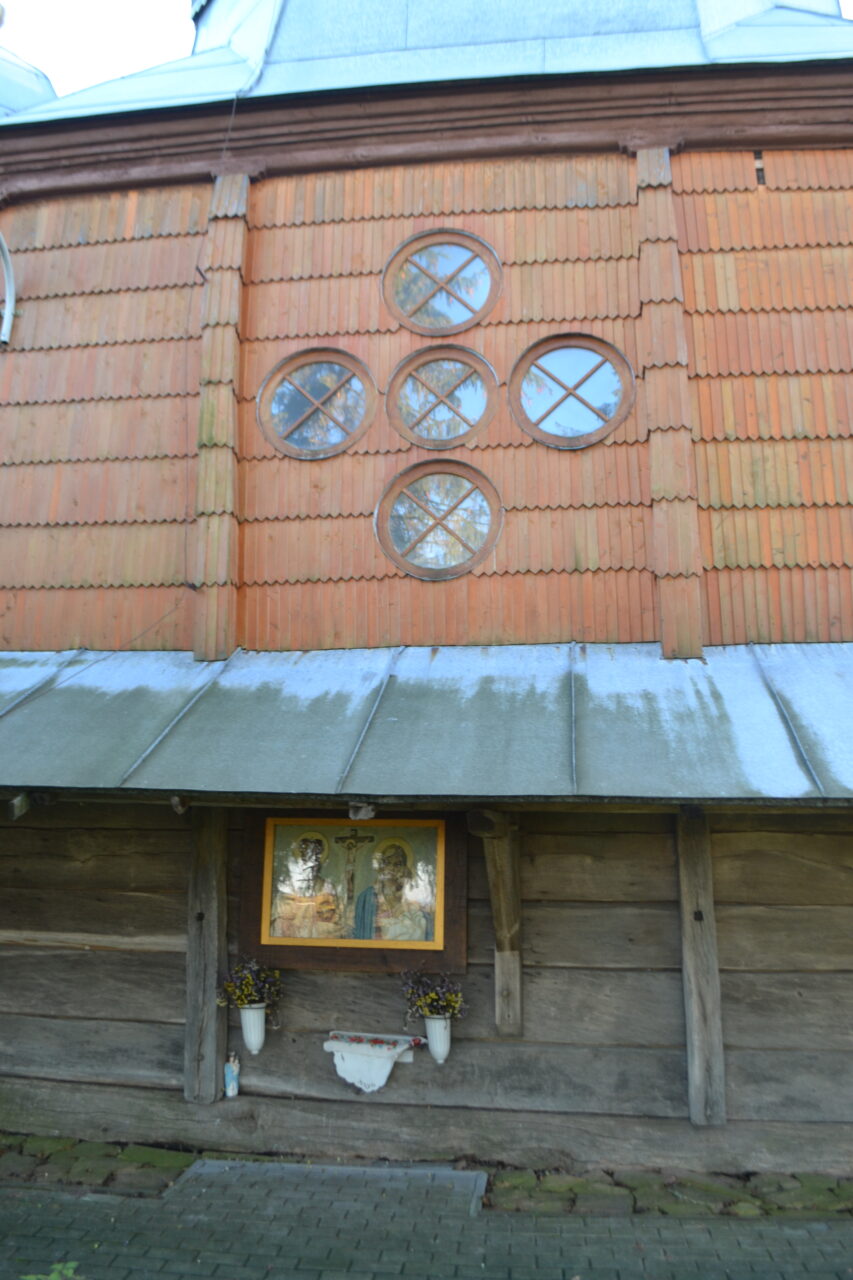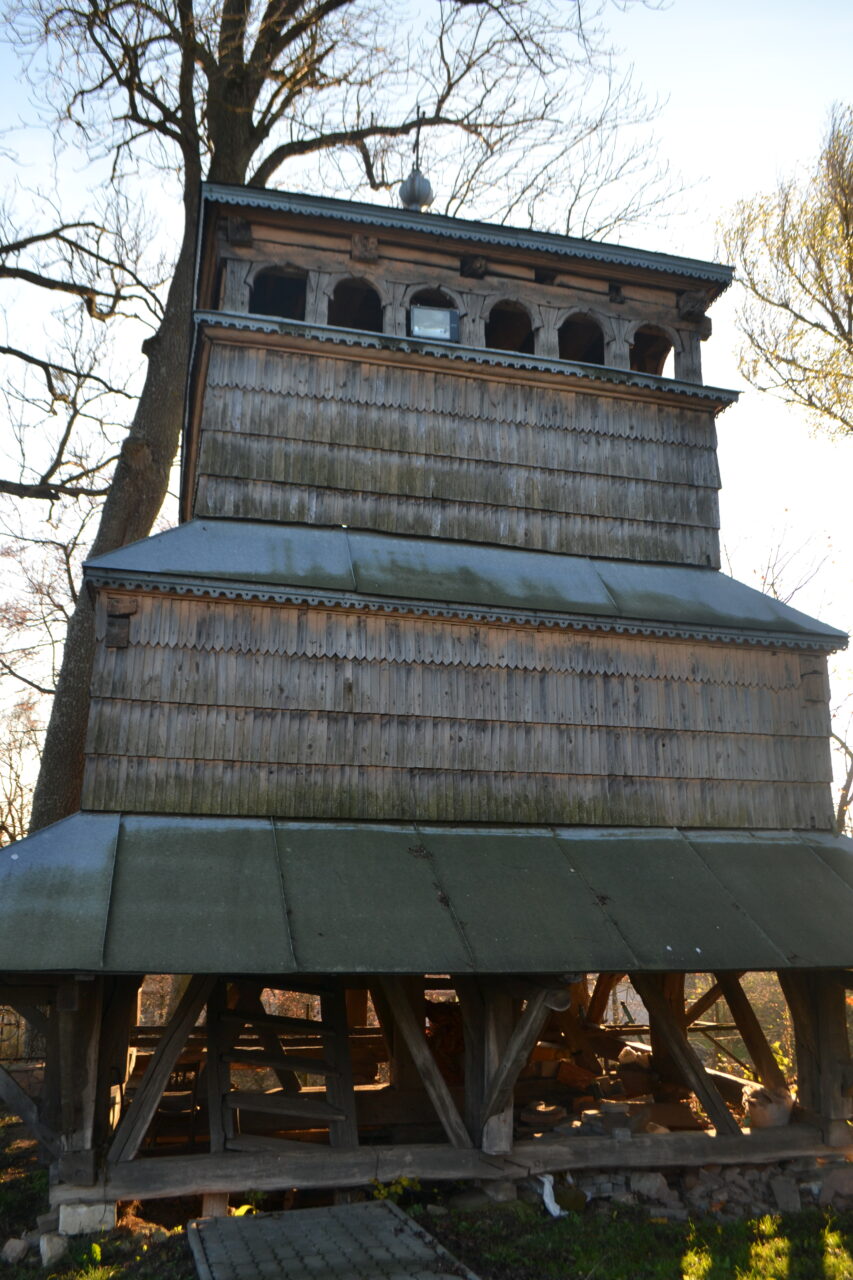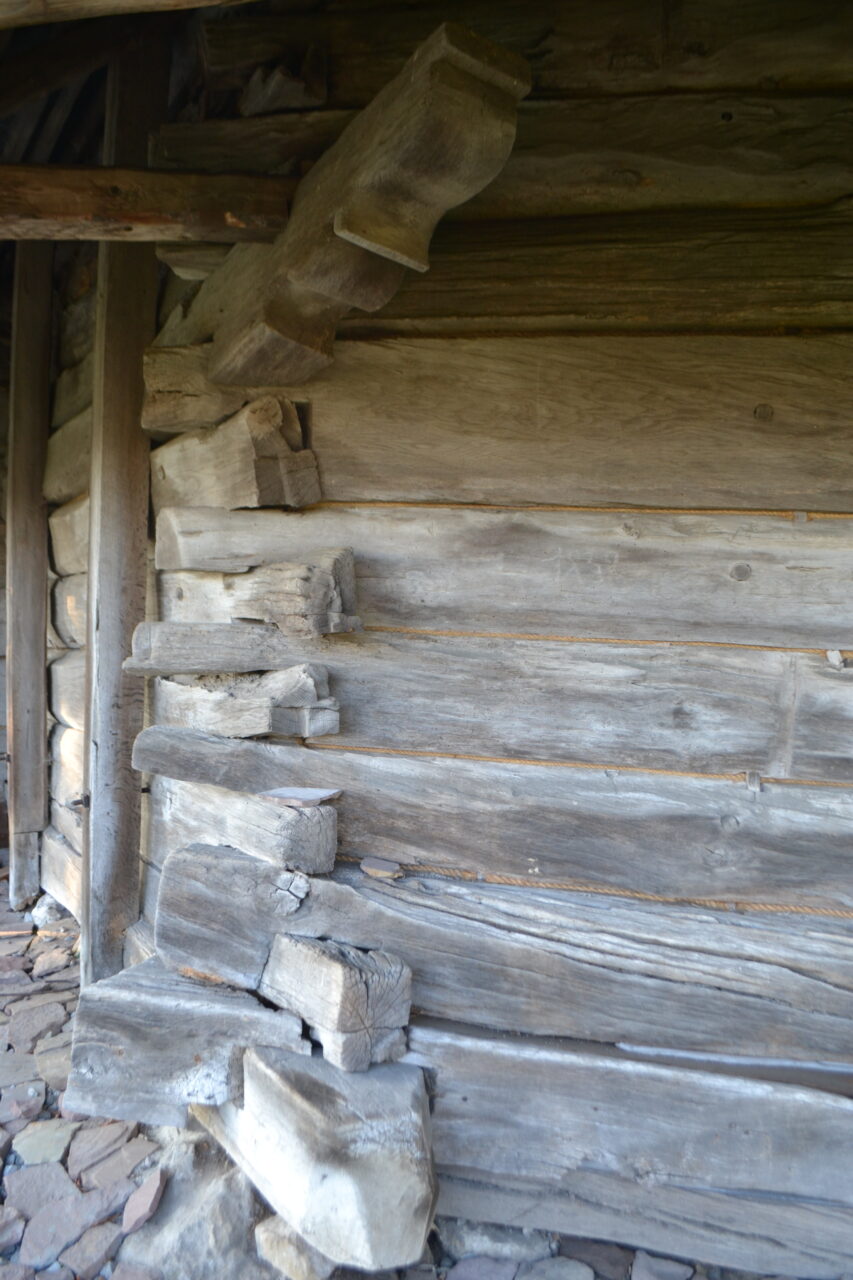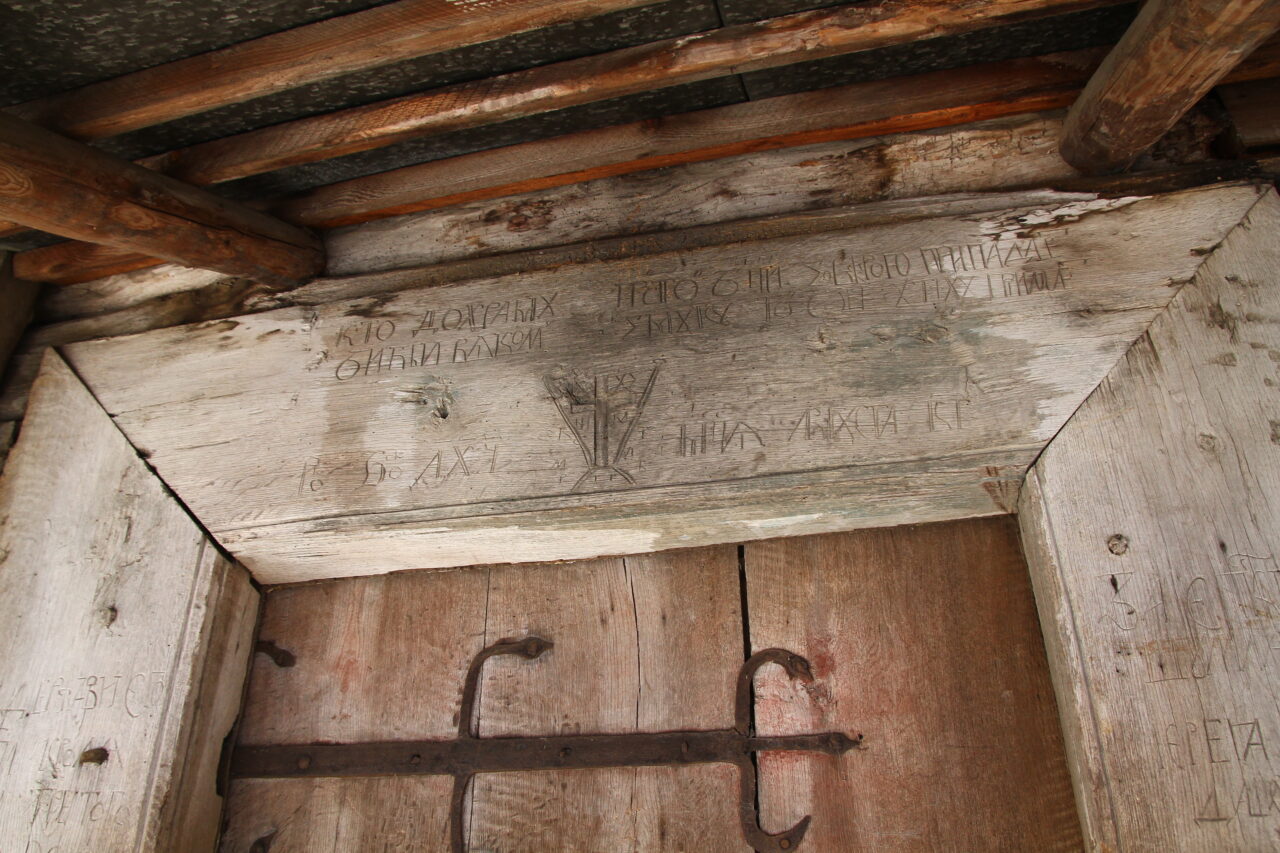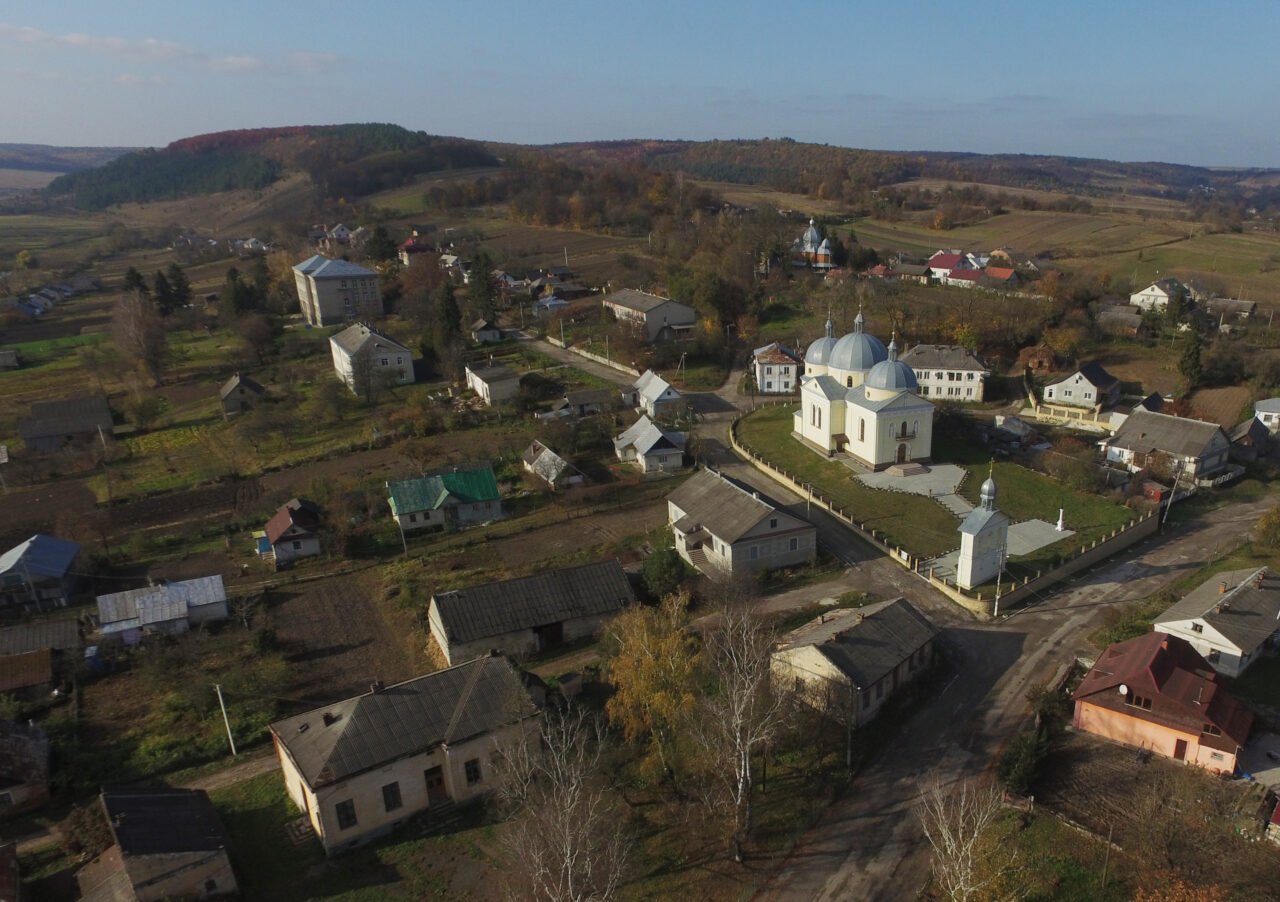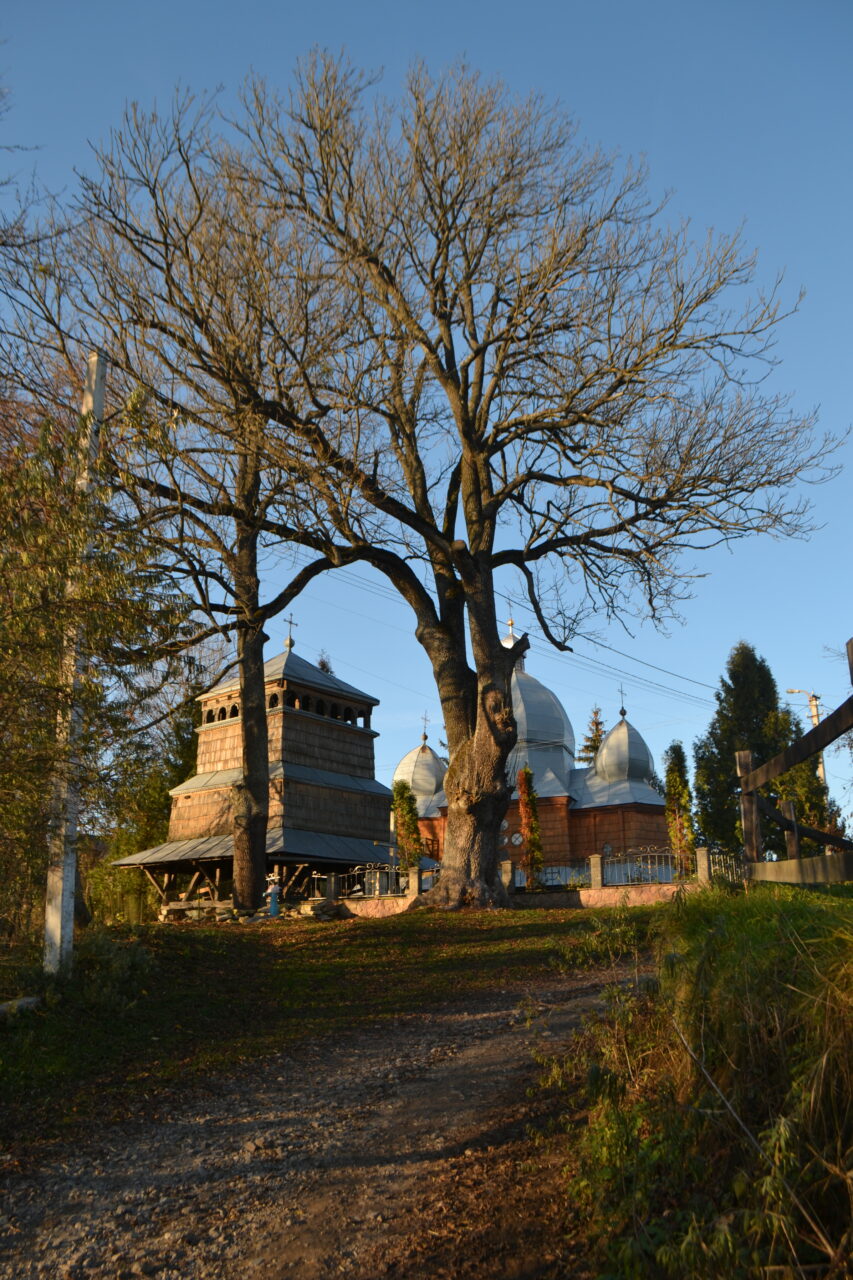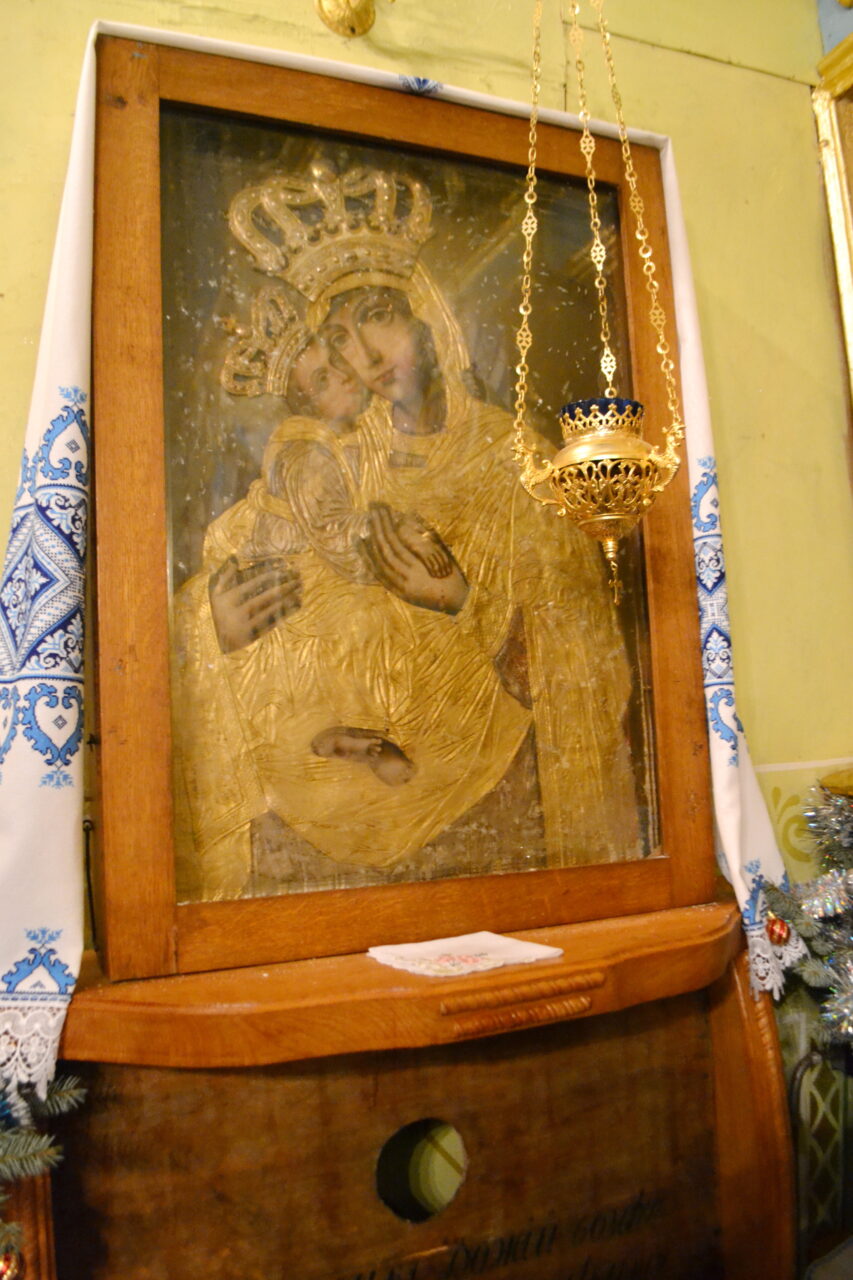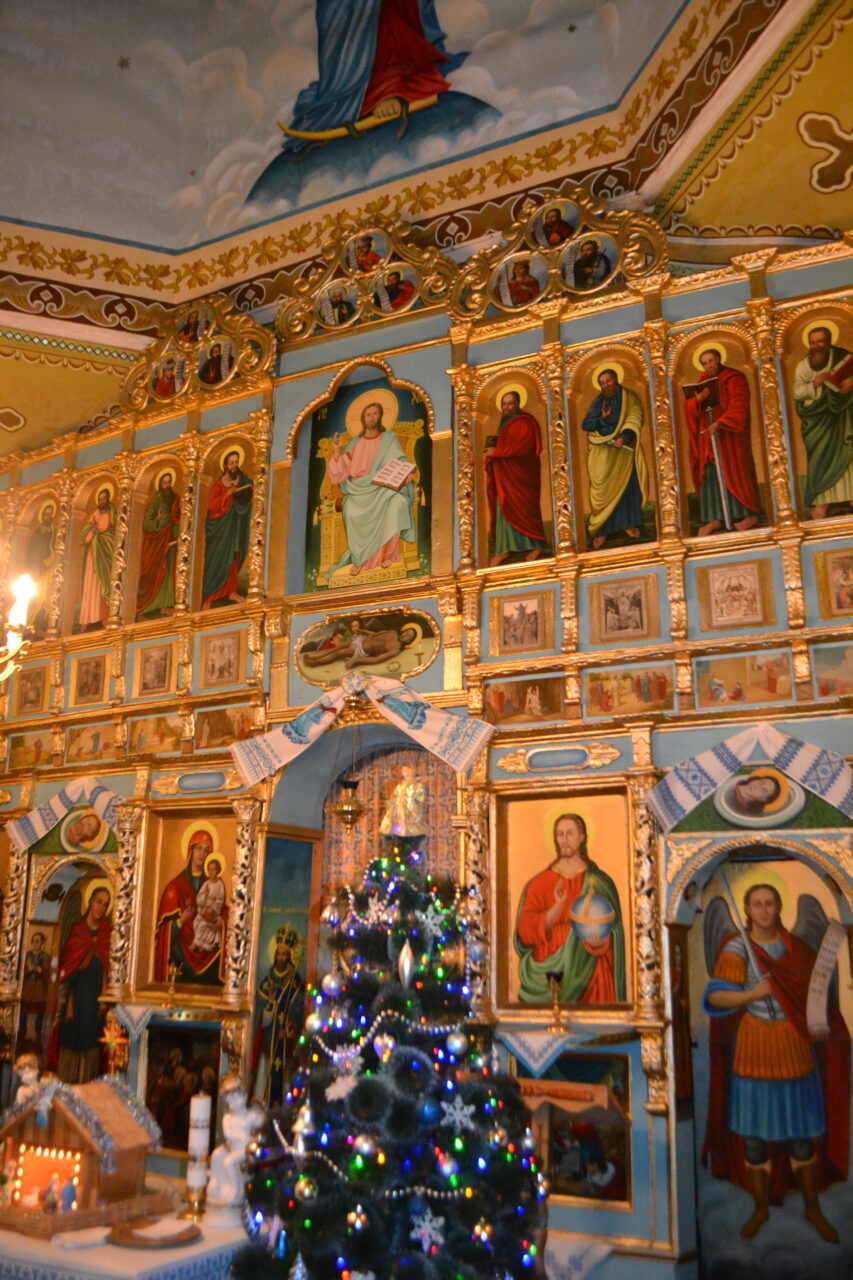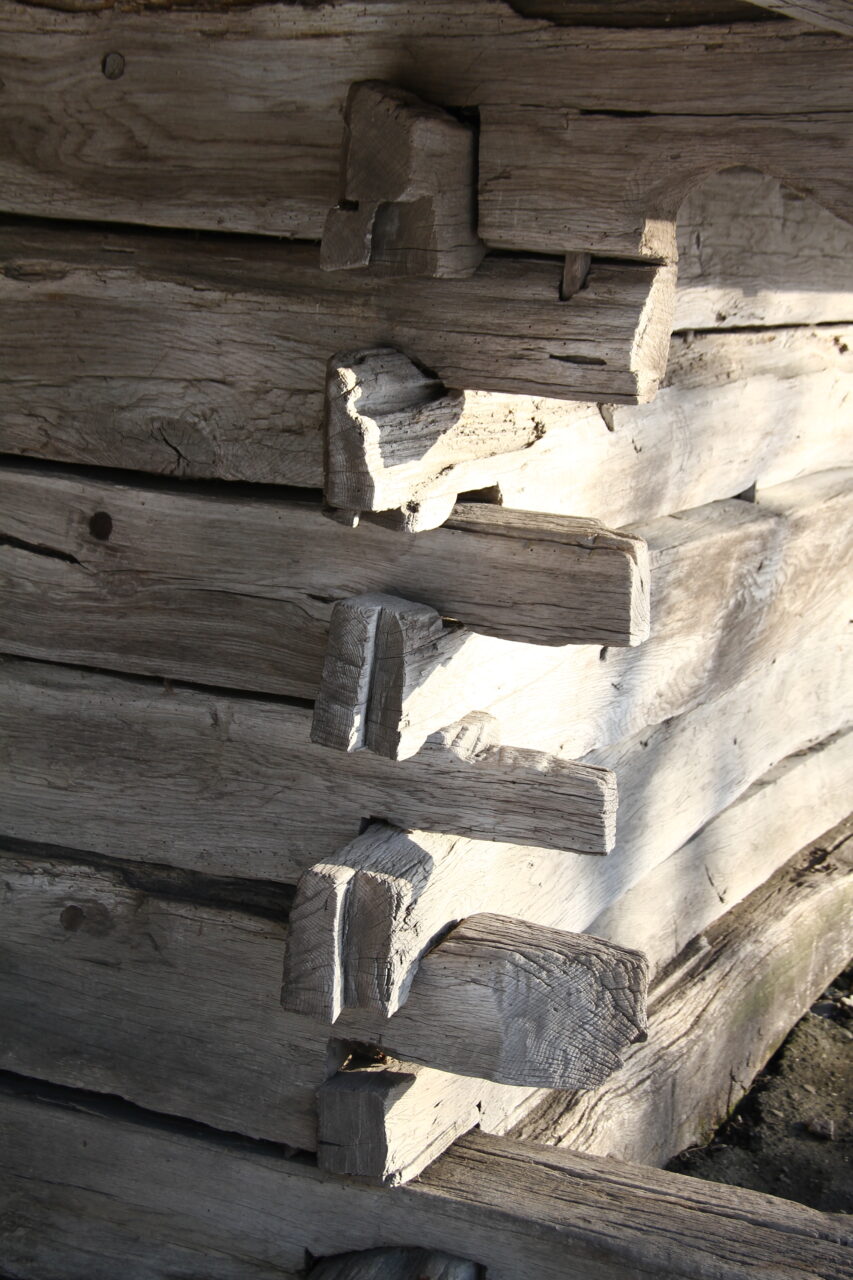In recent years Pomoriany has been receiving the attention of the press, local historians, and people who are not indifferent to historical monuments. ‘ Spadshchyna. UA’ NGO has been putting titanic efforts to save the renaissance castle of Sobieski magnates for several years in a row. The stronghold seems to have been beyond life, and the activists’ efforts are slowly reviving it.
And the town hall in Pomoriany finally received the publicity three years ago, when a neo-Gothic building (actually only one wing of the former majestic magistrate) was put up for sale at the country’s most popular Internet flea market. Peoples’ indignation was effective and the decision to sell the town hall was cancelled.
And in the shadow of these media scandals there are the ex-town two ancient temples: a brick catholic church and a wooden church of the Solemnity of Mary, Mother of God. Let’s talk about the latter.
If you enter Pomoriany from Zolochiv side, the wooden temple may be the first architectural monument seen in the town. It is located to the right of the road, in the depth of the side rode, on the rise. A newer brick church can obscure a wooden building, but still it is high. But the old church hillock is quite above the average. Due to this hill local people call the shrine ‘an upper one’. Because there was once another wooden church, the Trinity one, built in 1718, and iw was called the ‘lower church’. It hasn’t survived to our time.
The church of the Solemnity of Mary, Mother of God dates back to 1690. But even then the temple was not built on an empty place, but where the forerunner church was located. That shrine happened to exist in harsh times – frequent Tatar raids on the settlement of Podillia and Galicia did not even let dream of peace and quiet. And that temple was burning. It was rebuilt from ashes by Jan III, the most famous Polish King’s father – Jakub Sobieski, the Pomoriany and the local castle owner. He rebuilt the church and other city buildings, destroyed by fire, but later they were destroyed again and again by enemies. In 1672, after the Orientals’ invasion there was nothing to rebuild, but the church rose again from nonentity in 1674. Then a priest named Shashkevych served there, maybe he was either a namesake or a relative of another famous Markiian Shashkevych from Zolochiv district.
The restored church was only 16 years old, as the perishers decided that it was no longer suitable for their needs. It was rather small and tight. So they needed a bigger church. This is how the monument still adorns Pomoriany was created.
It was built of hewn oak. No single nail was used in the construction. However this is how all the hundreds of other ancient Ukrainian shrines were built, as in those days nails were an incredible luxury, which very few people could afford. Traditional three log houses: the square nave and narthex and a faceted altar. The masters looked at the temples of neighboring Volyn, so the Pomoriany church is high, completed with three majestic domes. The whole church is surrounded with a long gallery on the columns, which is also a typical feature of South Volyn churches. The architectural particularity is the five windows that cut through the south and north walls of the nave are arranged in a shape of a cross.
The temple walls are slightly sloping inward. Such a ‘barrel’ silhouette is, in fact, typical of the old Galician churches. Another archaic feature – the temple entrance through the narthex is located not from the west, but from the south. After all, the same as the window absence in the narthex, the prayer hall for women was illuminated by the doorway.
There is a local legend, that the church was built by the Cossacks from the Cossack detachments of the Lysiany colonel Maksym Kryvonis and his chum, a Korsun colonel Stanislav-Nestor Morozenko. And it doesn’t matter that the both national heroes died in the 1640s, allegedly, the Cossacks built the temple during the campaign against Lviv in 1648, when the colonels were still alive.
That is patriotically, but absolutely not historically. Another legend claims that one of the local iconostasis icons is considered to be miraculous.
During its long life the church has undergone a lot of renovations, both inside and outside. The shrine interior was restored in 1851. Andin 1899 they covered both the top and the attic with gray tin. They must have believed that this way the temple would look better and wealthier.
To the south of the temple there is a bell tower with an arched gallery around the perimeter. The building burned down on May 19, 1889, so badly that the old bells were melted by fire.
Also in the church yard there is a large laconic cross. It is a reminder of the anti-alcohol missions that father Rudolf Mokh was conducting in the village since 1875. The peasants’ drunkenness was then fought in Pomoriany by large-scale cross processions.
In 1906 the church was visited by Metropolitan Andrei Sheptyskyi.
In 1969-1970 Lviv architects carried out a professional restoration of the building, which had long been used as a warehouse. Only the winds of ‘perestroika’ returned the shrine to the parishioners. It happened in 1989.

